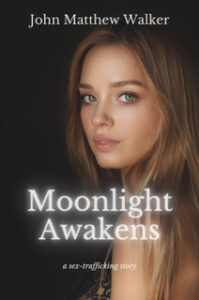by John Matthew Walker @jdubmd
If you’ve ever been to a writers conference or critique group, you’ve heard the phrase “target audience.” But what does it really mean? Who is your target audience? And why is it so important?
Imagine yourself taking up a new hobby. It sounded crazy. You didn’t really want to do it, but you reconnected with that one daredevil friend from high school, and she’s invited you to her archery club. You’ve done the work, bought all the right gear, and watched a lot of videos on archery. Now it’s time to go to the range.
Does the instructor or your friend ask, “What are you aiming for?”
I can’t imagine. There’s a huge round target about 50 feet away with large rings that get smaller as they encroach on a bold red circle in the middle. The circle is about the size of an apple, and there’s a quarter-sized black dot in the dead center.
Imagine smiling despite your nerves and saying, “This bow is power in my hands, and my arrow can hit anything.”
Now picture the instructor’s puzzled look as he says, “Yes, but can you hit the target?”
The truth is you don’t just want to hit the target, you want to pull a Robin Hood and nail that bullseye then split the arrow with another perfect shot.
You’re hunting for the perfect reader, the one who is going to dive deep into your book, disappear into your character’s world, and finally come up for air with a mix of joy, intrigue, or wonder, and a measure of sadness that the story is over.
But it’s not over. Your story was so good, it lingers in the reader’s mind and spills into conversation and onto another reader. That reader is your target audience—your dream reader.
How do you find that dream reader?
When you churn a story in your mind—before you’ve even written your first word, think of your reader. Picture her browsing a bookstore or curled up in a cozy nook, in bed, or on the beach under an umbrella reading your final product. What did she like about the cover, the opening line, the first chapter, your main character, the setting? What made the story move, or what is it about the story that moved your reader?
Too often, writers are glued to a story they’ve poured from their heart. They’ve sacrificed hours upon hours, leaving gaps in their life all for the sake of their story but with no real thought for their target audience.
As you're writing, always think of your reader. @jdubmd #ACFW #writing #ChristianFiction Share on XAfter you’ve written your first draft, your first chapter, or maybe your first paragraph, pause, read it out loud as though you are the reader picking up that book for the first time. You’ve been browsing the bookstore or reading samples on Amazon. Does the story grab your attention? Does it hold your attention? Does the story or the main character intrigue you or offer something that makes you want to read more? Are you so into the story that you’ve forgotten the world around you and you’ve lost yourself in the main character’s thoughts, seeing their world through their eyes? Or are you trudging through it hoping something will grab your attention and make you want to keep reading?
In my critique group, we emphasize repeatedly “Always think of your reader.” In fact, try to avoid thinking of your target audience as an audience. Instead think of one person who would love your story.
Choose that person, and write for them. What are they looking for in a story? It might help if you think of someone you know that’s hard to please, but they like the way you write, and they’re brutally honest about it.
Make your story one that will absolutely nail everything they want in a book.
What happens when you do? Is that person the only one who’s going to read it? Have you made your target audience too small? Have you sold yourself short?
No.
Do you think Suzanne Collins wrote The Hunger Games with you in mind? What about J. K. Rowling?
Their books targeted middle school girls and twelve-year-old boys, and to those audiences they were brilliant.
And that brilliance spilled over to much broader audiences that probably includes almost everyone reading this blog. But what if Suzanne Collins had painted her stories in broader strokes for a larger market? Would she have hit her target? Would that target have grown as it did?
It’s hard to hit that bullseye if you’re thinking of the larger target. Focus on the bullseye. If you hit the edge of the larger circle, no one cares. You bury the head of that arrow in that quarter-sized center, everyone takes notice.
Authors seldom find their target with book one. There are obvious exceptions, but for many, they write a few bombs, a never-published first novel, a few average sellers, until something clicks. Sometimes it’s hitting the right subject at the right time. You can’t really plan that, but it’s nice when it works out. Elle Marie Wiseman wrote The Orphan Collector, a story of loss, survival, and perseverance that takes place during the 1918 flu pandemic. That story launched in, you guessed it, 2020. Her target audience exploded, and her story has well over 40,000 votes on Goodreads.
Sometimes you find your target after your first success. That could be publishing a story that finally connects, and exploring your reviews to see what kind of readers really love your book, and what they’re saying about it. Sometimes that success comes long after sending your work—your baby to an editor and getting a jolting response.
“Your writing isn’t ready for an editor. You need a mentor or a developmental edit.”
That’s my story, and it was probably the best thing that ever happened to me as a writer. Those words felt like opening a door to a bucket of ice in my face. I hired that editor, and she shredded every flaw in my story. After the bloodletting, I took a fresh look at my work with the thousands of red marks and paragraph after paragraph of comments in the margin.
After an agonizing rewrite, that novel turned had become some to be proud of, but more importantly the process set me on course to become a better writer. That was my third novel, and that was when I started to find my voice, my tagline, and my target audience.
Once I realized what I was writing and whom I was writing for, the fourth novel was much easier to write, and it needed less revision. The evidence is in its success compared to the previous three.
My target reader is a young woman struggling to stay on top in a world that tries to beat you down. She’s strong, determined, not afraid to tackle life’s trials, but searching for hope and courage. My stories provide that hope. My characters fall into dark moments where hope seems lost. They never give up. They can’t give up. There’s too much at stake, and if they fail, they lose everything, and they lose themselves. In the midst of that darkness, they cling to hope as though they’re trapped in a shipping container with unrelenting heat and diminishing air, and the only hope is a pinhole of light.
As you refine your story, always think about your reader.
ABOUT JOHN MATTHEW WALKER MD:
 In my medical practice, the patients are the heroes—each with their own unique story. Often their stories delve into harsh realities. I’m there to provide hope and guidance to bring them through those trials. I do the same with my characters. They journey deep into darkness and discover that the light is still there—even if it’s only a wavering flicker of hope. My stories holds true to the tagline: Suspense That Awakens Hope. If you’re curious about the novels I’ve written, visit johnmatthewwalker.com.
In my medical practice, the patients are the heroes—each with their own unique story. Often their stories delve into harsh realities. I’m there to provide hope and guidance to bring them through those trials. I do the same with my characters. They journey deep into darkness and discover that the light is still there—even if it’s only a wavering flicker of hope. My stories holds true to the tagline: Suspense That Awakens Hope. If you’re curious about the novels I’ve written, visit johnmatthewwalker.com.

Comments 4
Thanks for sharing your journey and wisdom, John.
John, it sounds like your stories will truly touch the hearts of the hurting who need hope! Thank you for sharing the story of your writing journey. Blessings on your writing!
Thanks for sharing Your Book sounds very interesting!
I’m writing the sequel to my first book. I did hit it right with my target audience because so many readers are eager for a sequel. That’s great, but writing it keeps stalling. My characters are different because of their transformation. There are issues not addressed in the first book which I have great ideas for, but something is wrong. I’m wondering if I’ve lost the target?